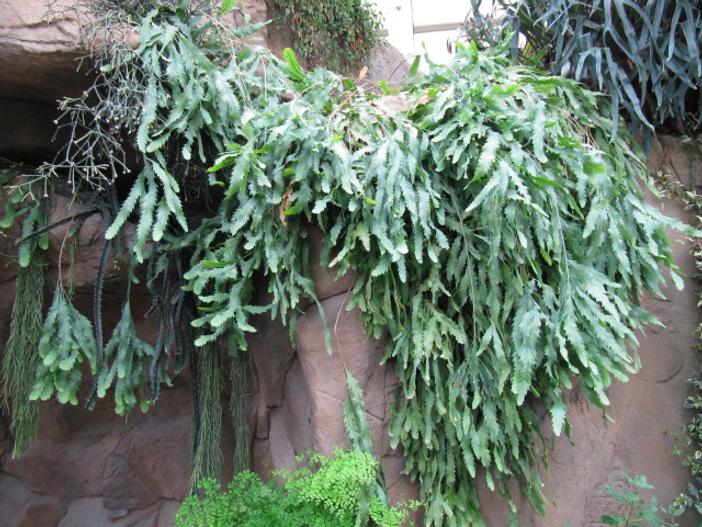(Lepismium houlletianum)
(Lepismium houlletianum)
/
/

Leonora (Ellie) Enking
CC BY-SA 2.0
Image By:
Leonora (Ellie) Enking
Recorded By:
Copyright:
CC BY-SA 2.0
Copyright Notice:
Photo by: Leonora (Ellie) Enking | License Type: CC BY-SA 2.0 | License URL: https://creativecommons.org/licenses/by-sa/2.0/ | Uploader: wallygrom | Publisher: Flickr














Estimated Native Range
Summary
Lepismium houlletianum, with no widely recognized common name, is an epiphytic cactus native to the rainforests of South America, specifically in Argentina and Brazil, and potentially in Bolivia. It thrives in the understory of subtropical or tropical moist lowland forests and montane forests, often attaching itself to trees and absorbing moisture and nutrients from the air and rain. This cactus typically exhibits a cascading or vining growth habit, with long, segmented stems that can reach several feet in length. The stems are green to reddish in color, and the plant produces white to pale pink flowers that are small but quite showy when they bloom in the warmer months.
Lepismium houlletianum is valued for its unique, ornamental appearance and is often grown in hanging baskets or as a mounted specimen to mimic its natural epiphytic growth. It is relatively easy to maintain, requiring minimal water, well-draining soil, and bright, indirect light. It is not tolerant of frost and should be protected from cold temperatures. In cultivation, it is important to provide a humid environment and to avoid overwatering, which can lead to root rot. While it is not known to be particularly susceptible to pests or diseases, mealybugs and scale insects can sometimes be a problem.CC BY-SA 4.0
Lepismium houlletianum is valued for its unique, ornamental appearance and is often grown in hanging baskets or as a mounted specimen to mimic its natural epiphytic growth. It is relatively easy to maintain, requiring minimal water, well-draining soil, and bright, indirect light. It is not tolerant of frost and should be protected from cold temperatures. In cultivation, it is important to provide a humid environment and to avoid overwatering, which can lead to root rot. While it is not known to be particularly susceptible to pests or diseases, mealybugs and scale insects can sometimes be a problem.CC BY-SA 4.0
Plant Description
- Plant Type: Succulent
- Height: 1-3 feet
- Width: 2-4 feet
- Growth Rate: Moderate
- Flower Color: N/A
- Flowering Season: Spring
- Leaf Retention: Evergreen
Growth Requirements
- Sun: Full Sun, Part Shade
- Water: Medium
- Drainage: Fast
Common Uses
Low Maintenance, Potted Plant
Natural Habitat
Native to the understory of subtropical or tropical moist lowland forests and montane forests in South America
Other Names
Common Names: Rhipsalis Coral Cactus
Scientific Names: , Lepismium houlletianum, Acanthorhipsalis houlletiana, Hariota houlletiana, Hatiora houlletiana, Lepismium houlletianum f. regnellii, Lepismium houlletianum f. regnellii, Lepismium houlletianum var. regnellii, Nothorhipsalis houlletiana, Nothorhipsalis houlletiana subsp. regnellii
GBIF Accepted Name: